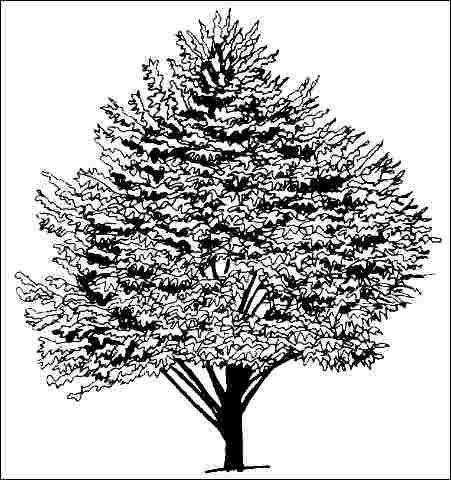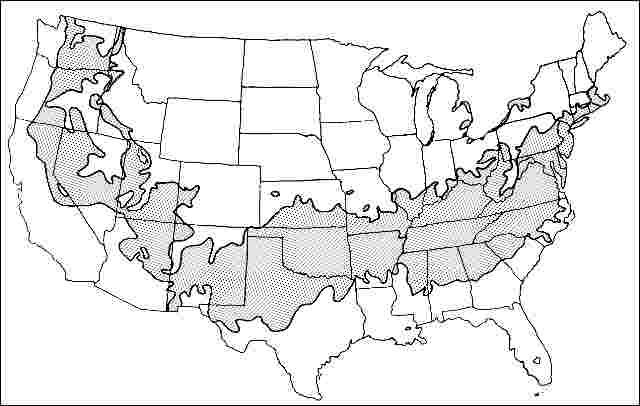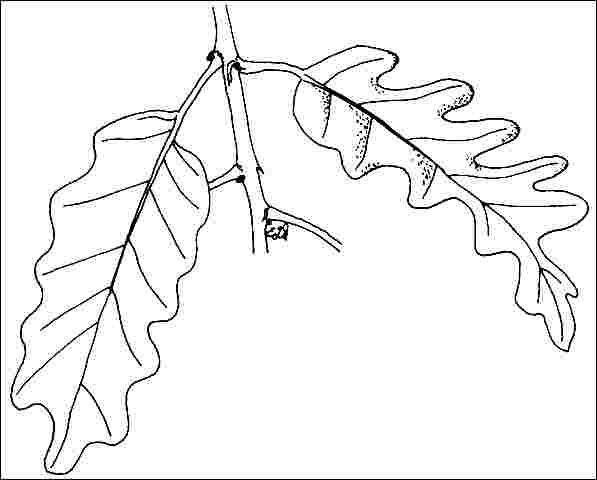Introduction
Turkey oak is a fast-growing deciduous tree capable of reaching 130 feet in height, but mostly seen at 30 to 50 feet tall and wide. The 2.5- to 5-inch-long leaves are covered with a fine fuzz on both upper and lower surfaces. The 1-inch-long acorns are set into big, woolly cups, and ripen in October. They germinate readily in a moist landscape. The attractive, ridged and furrowed bark reveals an orange color within its fissures. The trunk can grow to at least 3 or 4 feet in diameter.

General Information
Scientific name: Quercus cerris
Pronunciation: KWERK-us SAIR-iss
Common name(s): Turkey oak, moss-cupped oak
Family: Fagaceae
USDA hardiness zones: 6A through 7B (Fig. 2)
Origin: not native to North America
Invasive potential: little invasive potential
Uses: specimen; street without sidewalk; shade; parking lot island 100-200 sq ft; parking lot island > 200 sq ft; tree lawn > 6 ft wide; highway median
Availability: not native to North America

Description
Height: 30 to 50 feet
Spread: 30 to 50 feet
Crown uniformity: symmetrical
Crown shape: round
Crown density: moderate
Growth rate: moderate
Texture: medium
Foliage
Leaf arrangement: alternate (Fig. 3)
Leaf type: simple
Leaf margin: lobed, dentate
Leaf shape: oblong
Leaf venation: pinnate
Leaf type and persistence: deciduous
Leaf blade length: 2 to 4 inches, 4 to 8 inches
Leaf color: green
Fall color: yellow, brown/tan
Fall characteristic: not showy

Flower
Flower color: brown
Flower characteristics: not showy
Fruit
Fruit shape: round, oval
Fruit length: .5 to 1 inch
Fruit covering: dry or hard
Fruit color: brown
Fruit characteristics: attracts squirrels/mammals; showy; fruit/leaves a litter problem
Trunk and Branches
Trunk/bark/branches: branches droop; showy; typically one trunk; thorns
Pruning requirement: little required
Breakage: resistant
Current year twig color: brown
Current year twig thickness: medium
Wood specific gravity: unknown
Culture
Light requirement: full sun, partial sun, or partial shade
Soil tolerances: clay; sand; loam; slightly alkaline; acidic; well-drained
Drought tolerance: high
Aerosol salt tolerance: moderate
Other
Roots: not a problem
Winter interest: no
Outstanding tree: yes
Ozone sensitivity: unknown
Verticillium wilt susceptibility: resistant
Pest resistance: resistant to pests/diseases
Use and Management
Older specimens often develop a wide-spreading, multi-trunked form making it a great tree for climbing or for use as a specimen. Young specimens are observed growing with a straight central leader with well-spaced major branches. This should be a very durable landscape tree in the South.
Turkey oak should be grown in full sun or partial shade but tolerates almost any soil except wet ones. It grows well on sandy ridges and is salt-tolerant. Surprisingly, this tree is not grown in the trade and is not available. But its extreme drought tolerance, ability to thrive in poor, clay soil and attractive habit make it most worthy of use in urban areas. It might make a good street tree for southern cities.
Propagation is by seed.
Pests and Diseases
No pests or diseases of major concern.